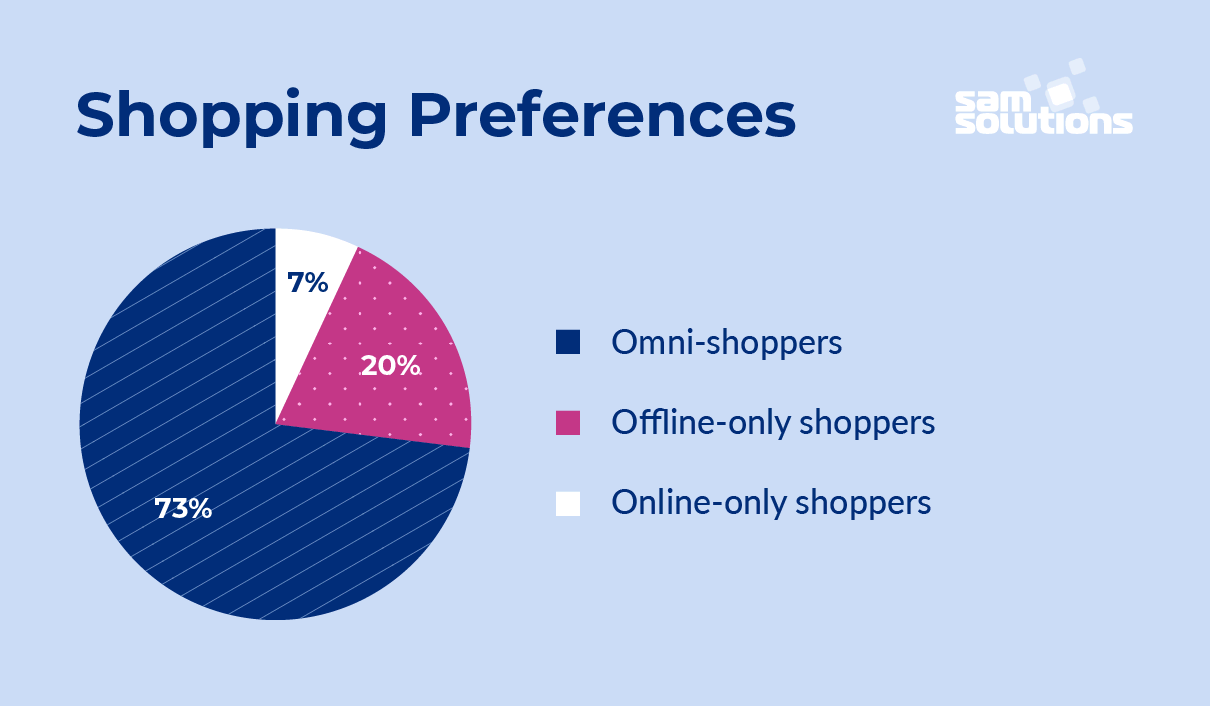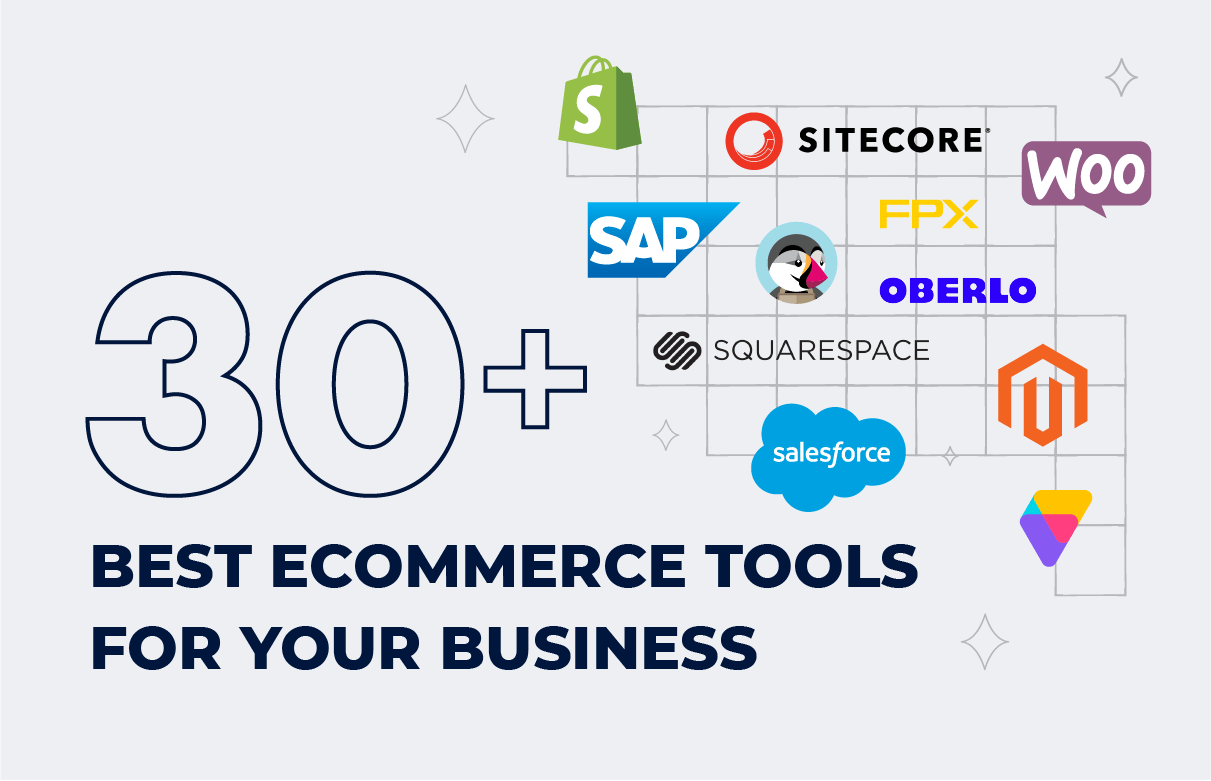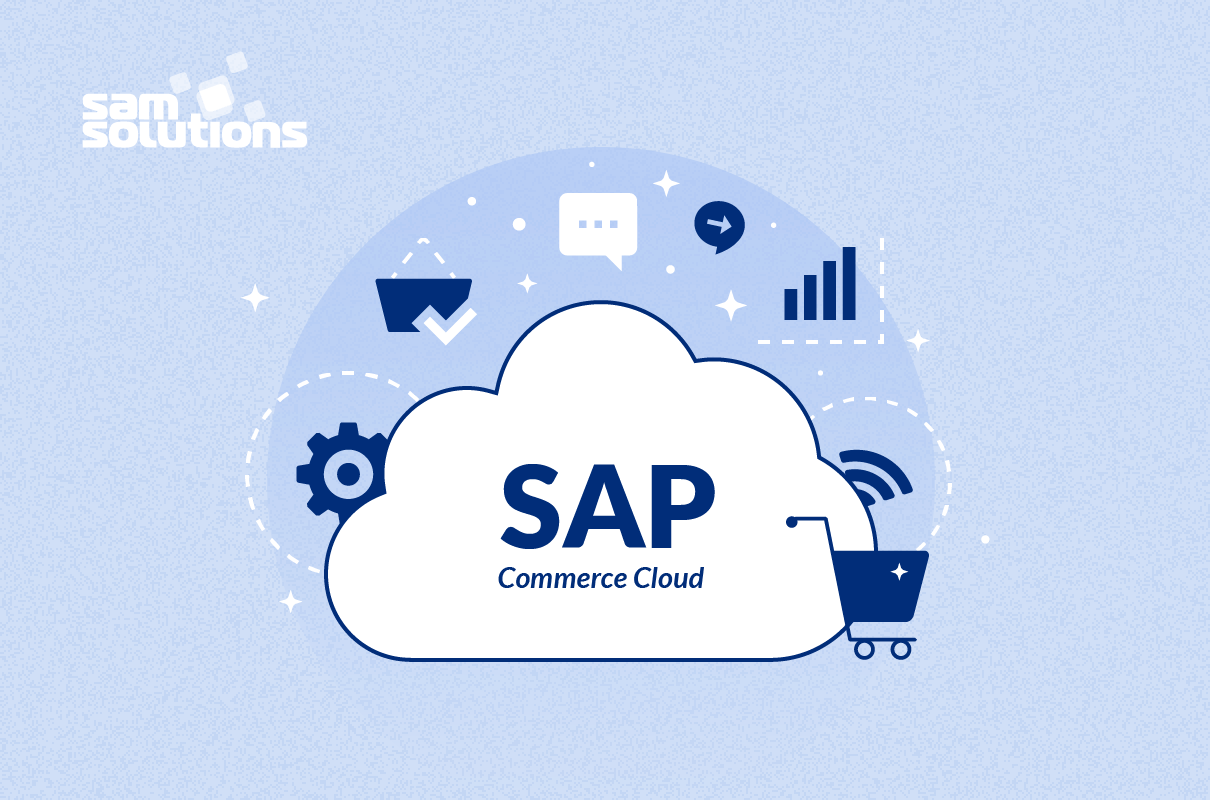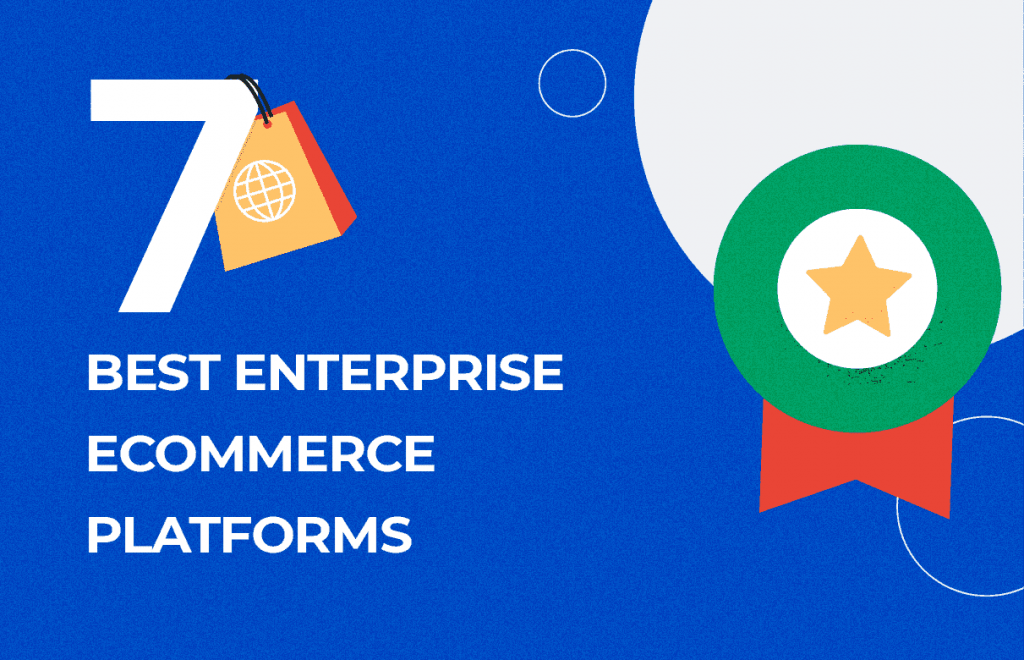The tempo of modern life doesn’t let people waste time on shopping. We all turn to various sales channels, seeking the fastest and most convenient way to fulfill our buying desires and meet our necessities. And we are likely to choose a retail brand that offers multiple touchpoints with the same customer experience, i.e. an omnichannel commerce approach.
What is the essence of omnichannel commerce, and why is this model appealing to the generation of modern customers? Let’s figure this out.
SaM Solutions offers a wide range of platform-based and from-scratch ecommerce development services that help you reach your digital sales objectives.
The Rise of Omni-Shoppers
Omnichannel sales continue to be a consistent eCommerce and customer experience trend 2020. Why? We know that trends appear under the influence of user preferences. Taking a look at the behavior of modern buyers, we notice that customer journeys become more complex, since most people prefer shopping across multiple channels.
Here are some vivid examples of Google’s research:
- Eighty-three percent of US shoppers who visited a brick-and-mortar store say they searched goods online before going into a store
- Two-thirds of online purchasers use offline stores before and after buying
- About 45 percent of global shoppers buy online and then pick up in-store, which offers them a more flexible way to purchase and receive their items
- More than 55 percent of shoppers surveyed say they used online video while actually shopping in a store
Today, it’s hardly possible to divide customers into those who purchase products online or offline exclusively. According to a study by Harvard Business Review, only seven percent of customers belong to online-only shoppers and 20 percent — to offline-only shoppers. Seventy-three percent of customers are using multiple channels during their shopping journey, so we can call them omni-shoppers.

This data proves why retailers need a focus on an omnichannel retail strategy.
What Is Omnichannel Commerce?
The essence of an omnichannel trading model is to instantly provide information about a product and to sell it through various channels, taking into account the customer’s previous order history and experience with a retail company.
An omnichannel commerce definition may go like this: it is a fully integrated approach to marketing, selling and customer service, based on the information exchange across channels such as a website, a marketplace, a mobile app, social networks, chatbots, offline stores, self-pickup points, etc., that aims to provide a consistent shopping experience.

How does it work?
- A purchaser can interact with a company through several touchpoints.
- The company collects and stores information about these interactions in a single repository, building a 360-degree customer portrait.
- If the purchaser switches between channels (e.g. goes from a website to a mobile app), the experience continues to be consistent.
- A single database contains relevant information about all products and fuels all sales and marketing channels with this trusted data.
- Prices and the range of goods are consistent across all channels.
Such centralized access to relevant information streamlines in-company workflows, improves collaboration and helps deliver a data-based engaging experience at the right time and place.
For shoppers, this type of retail shopping means a simplified buying process. They are free to choose the most optimal way to make a purchase, without bothering about how to order, pay and pick up.
Buyers want to search, buy, pick up and return products wherever it’s convenient for them.
Important: Facing the integrated retailing model, customers should feel no difference when choosing one channel or another; all the guarantees and capabilities should be equally available.
Multichannel vs. Cross-Channel vs. Omnichannel Experience
There are three scenarios for customer interaction with sales channels: multichannel, cross-channel and omnichannel. All three approaches involve selling across several digital and physical channels. But there are some differences.

Multichannel
With a traditional multichannel approach, sales channels are not connected. A website and an offline store are separate entities that don’t share information and can even compete with each other.
Example: If a client buys in-store, there will be no information about this purchase on the website, and vice versa.
Cross-Channel
With this approach, channels don’t compete but supplement each other. A customer can use several channels to complete one order.
Example: A user places an online order via an app, then pays and picks it up in-store.
Omnichannel
Similar to a cross-platform strategy, in the omnichannel approach, channels supplement each other. The difference is that they interact simultaneously, sharing data in real time so that customers can access relevant information anytime and from any place. An omnichannel retail strategy fills in all possible gaps between online and offline.
Example: Being in a store, a buyer can’t find a toy. Using the shop’s computer, a salesperson can check if the toy is available on the store’s website and order it to be delivered to the client’s address.
Omnichannel Commerce Principles
To keep up with customer expectations, retailers should deliver product content adhering to the core omnichannel principles:
- Consistency — data about products and customers should be consistent across all channels to eliminate informational gaps and misunderstandings during a shopping journey.
- Relevance — all product offerings created for a certain client should be useful and needed at this very moment.
- Personalization — the customer experience should be created on the basis of real-time data from all channels, no matter where the interaction takes place.
- Contextuality — product content and personalized offerings should reflect the current situation a customer lives in, whether it is the device used, the location, an event, a market change, etc. The level of consent retailers can establish is important for creating trusted and informed experiences.
Unified Commerce — the Next Generation of Retail
A new concept in the trading industry — Unified Commerce — is gaining traction nowadays. Based on predictive analytics, unified commerce aims to anticipate user needs and make appropriate offers before users form these requests themselves.
The idea has already been implemented using the Internet of Things technology when a smart refrigerator has an option to independently order products online, taking into account their consumption.
Unified commerce incorporates omnichannel best practices and predictive analytics capabilities for deeper analysis of customer journey and for creating unique selling propositions.
Benefits of an Omnichannel Commerce Strategy
Why should retailers endorse omnichannel commerce, and how can customers benefit from this retailing approach?
In a nutshell, for retailers, an omnichannel approach promises increased revenues, and for buyers, it results in a better customer experience.
Advantages for Business
- A single source of truth — by integrating data in one centralized ecosystem, businesses eliminate numerous manual processes, make more accurate data-based decisions and can sell everywhere from a single platform. Using APIs, they can innovate directly on the platform, adding new channels, apps and services easily.
- Instant reaction to changes — again, a centralized system allows companies to quickly reshape their offering in response to any market and society changes. Moreover, they can always offer accurate pricing and reliable stock information, which is highly important for clients.
- Increased conversion — businesses attract loyal customers by meeting them wherever and whenever they make a purchase and by offering them a variety of payment and delivery options. As a result, conversions and sales grow.
Advantages for Customers
- Saving time on making a purchase decision — when there are numerous options, and personalized recommendations are available, users choose the most convenient one and complete an order quickly
- Flexible buying journey — a holistic approach to marketing, inventory and selling eliminates data gaps and provides buyers with identical access to all products via all touchpoints
Best Software Providing Omnichannel Customer Experience
To create seamless buying experiences wherein customers can interact with your company via numerous channels, you need appropriate omnichannel commerce software.
Sitecore
The leading provider of customer experience management software, Sitecore offers the Sitecore Experience Manager (XM) solution to help companies distribute unified omnichannel experiences.
A headless CMS Sitecore Omni is a great tool for creating and delivering consistent content to all devices with one click.
SAP
SAP Commerce Cloud offers omnichannel marketing and sales experiences for B2C, B2B, and B2B2C companies, significantly minimizing backend management effort and maximizing the potential of touchpoints with users.
Actually, with integrated SAP solutions, you can establish outstanding business processes and stay ahead with the competition.
Magento
One more reliable software provider for creating omnichannel experiences is Magento with its eCommerce platform for B2B and B2C business models.
E-сommerce development with Magento is notable for AI-powered content personalization, expensive functionality, unlimited customization and insightful analytics.
Rely on SaM Solutions’ experts to tailor Magento to your individual digital retail needs.
Full Engagement Is What Matters the Most
Synchronizing the worlds of digital and physical commerce into a holistic ecosystem should be at the core of any retail strategy in current market conditions.
Retail companies working with the focus on customer experience and leveraging the power of diverse devices will definitely meet user needs and expectations. At the same time, purely online or offline retailers are facing the risks of missing opportunities and falling behind the competition.



























 5 Reasons Why Your Business Needs a Mobile eCommerce Application
5 Reasons Why Your Business Needs a Mobile eCommerce Application Using Salesforce to Improve Your Sales Pipeline: Five Tips
Using Salesforce to Improve Your Sales Pipeline: Five Tips Cross-Platform Mobile Development: Five Best Frameworks
Cross-Platform Mobile Development: Five Best Frameworks How to Develop Custom Accounting Software
How to Develop Custom Accounting Software 10 Best Web Development Frameworks in 2024
10 Best Web Development Frameworks in 2024



![What Is Ecommerce Customer Service? [Including 8 Best Practices]](https://www.sam-solutions.com/blog/wp-content/uploads/Customer-Service-in-eCommerce.png)








 Top 30 Ecommerce Tools to Elevate Your Business in 2024
Top 30 Ecommerce Tools to Elevate Your Business in 2024 5 Best Tools to Improve Embedded Software Testing
5 Best Tools to Improve Embedded Software Testing Why React and Node.js Are the Top Technologies for Creating High-Performance Web Apps in 2024
Why React and Node.js Are the Top Technologies for Creating High-Performance Web Apps in 2024 10 Best IoT Platforms for 2024
10 Best IoT Platforms for 2024
The best way for businesses to keep pace with technology is to move away from silo-communication, and embrace omnichannel customer engagement.